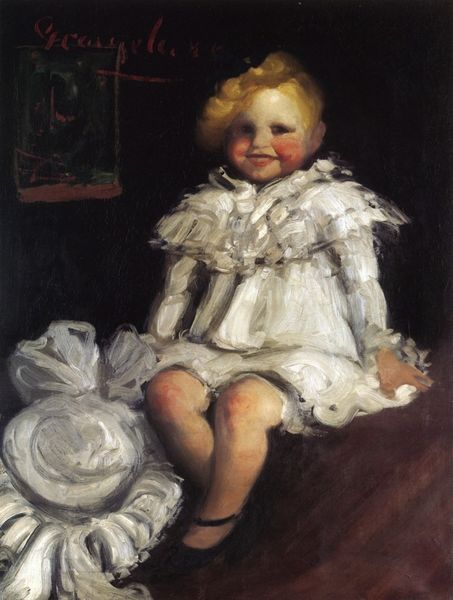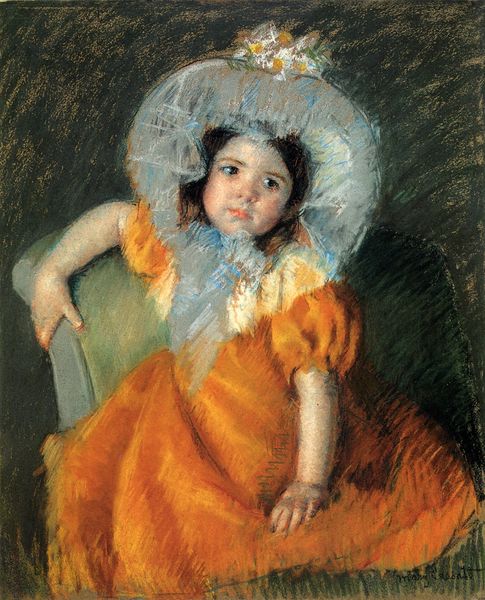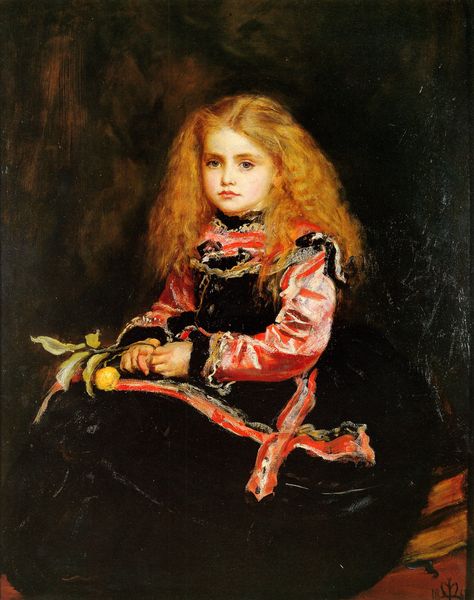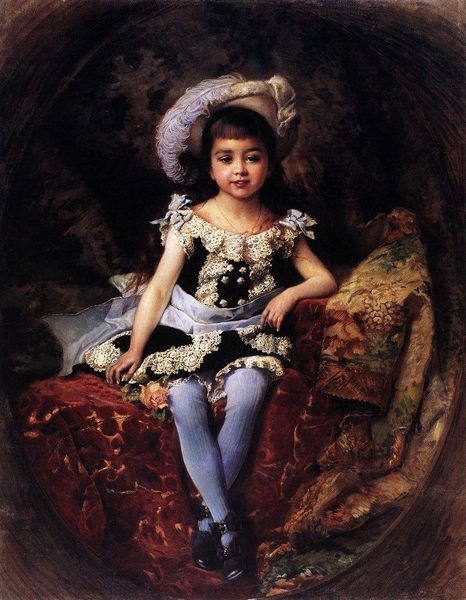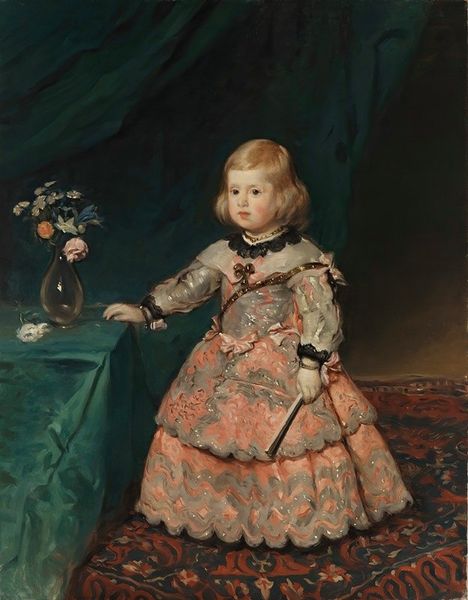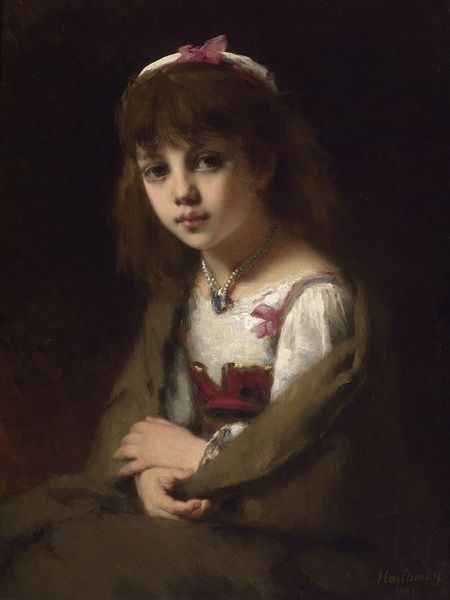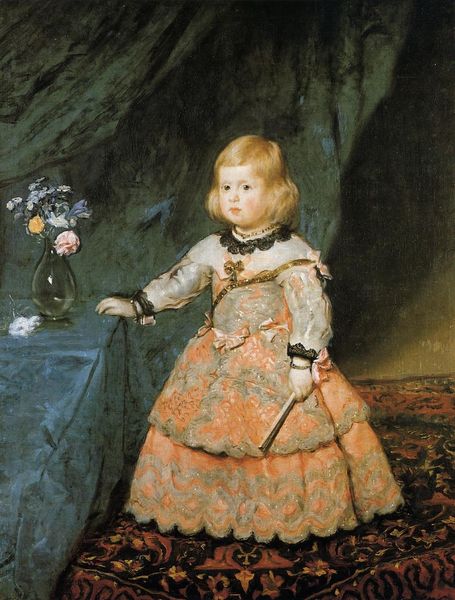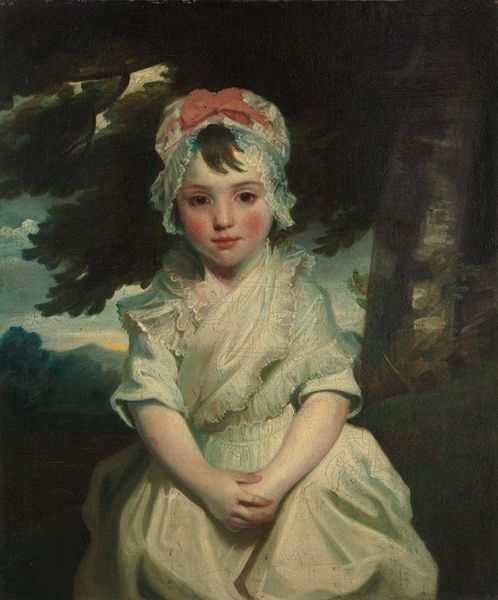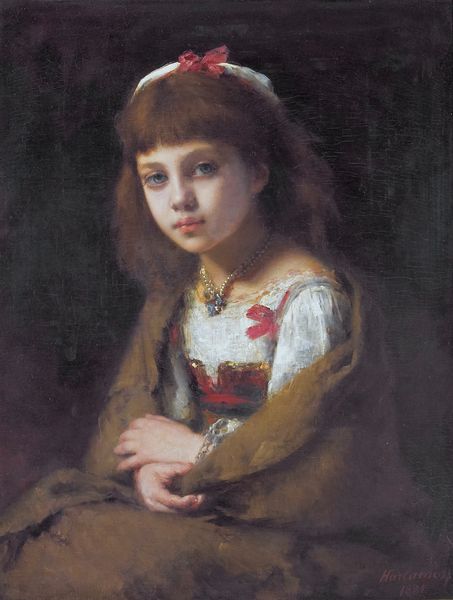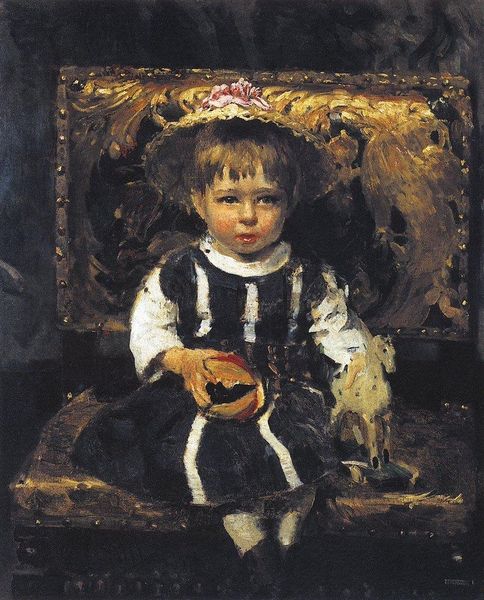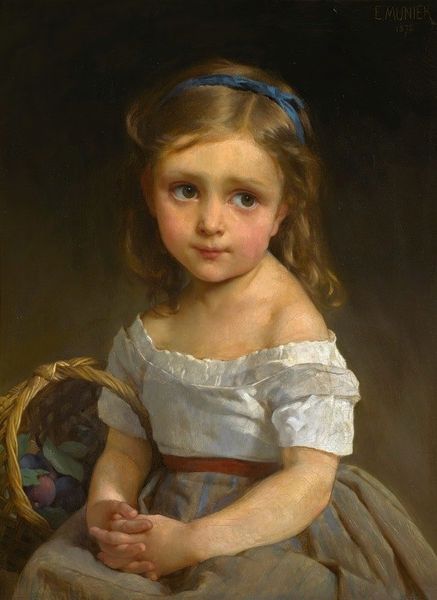
painting, oil-paint
#
portrait
#
painting
#
impressionism
#
oil-paint
#
oil painting
#
famous-people
#
child
#
portrait head and shoulder
#
underpainting
#
painting painterly
#
genre-painting
#
lady
#
realism
Dimensions: 162.6 x 86.3 cm
Copyright: Public domain
Editor: So, here we have John Singer Sargent's "Beatrice Goelet" from 1890, done with oil paint. There's this striking juxtaposition; you have a little girl in a very elaborate dress alongside this birdcage. What catches your eye when you look at it? Curator: I'm immediately drawn to the opulence conveyed through material representation. The silk of the dress, rendered with such visible brushstrokes, speaks volumes about the Goelet family’s wealth and social standing. How was this wealth produced, and at whose expense? The portrait becomes a record of conspicuous consumption. What processes, and whose labor, contributed to the production of this very material world that Sargent captures? Editor: That’s a really interesting point! I hadn't considered the labour aspect so explicitly. So, are you suggesting Sargent's painting is not just about depicting a pretty girl, but it subtly comments on wealth creation in the Gilded Age? Curator: Precisely! Look at the birdcage as another crafted object. Who made it? What materials were used, and where did they originate? The painting, at its core, is about how materiality constructs our understanding of class and status. Think also about the availability of oil paints themselves; the chemistry, production, and distribution. Every element from the canvas up tells a story about production, availability and wealth. Editor: It makes you think about where things come from, the labour behind them, and how all of that informs the subject of the portrait. Thank you for opening my eyes to it! Curator: Indeed, art like this offers such a direct point of engagement with tangible history and cultural analysis; it gives rise to really interesting and worthwhile questions.
Comments
No comments
Be the first to comment and join the conversation on the ultimate creative platform.
